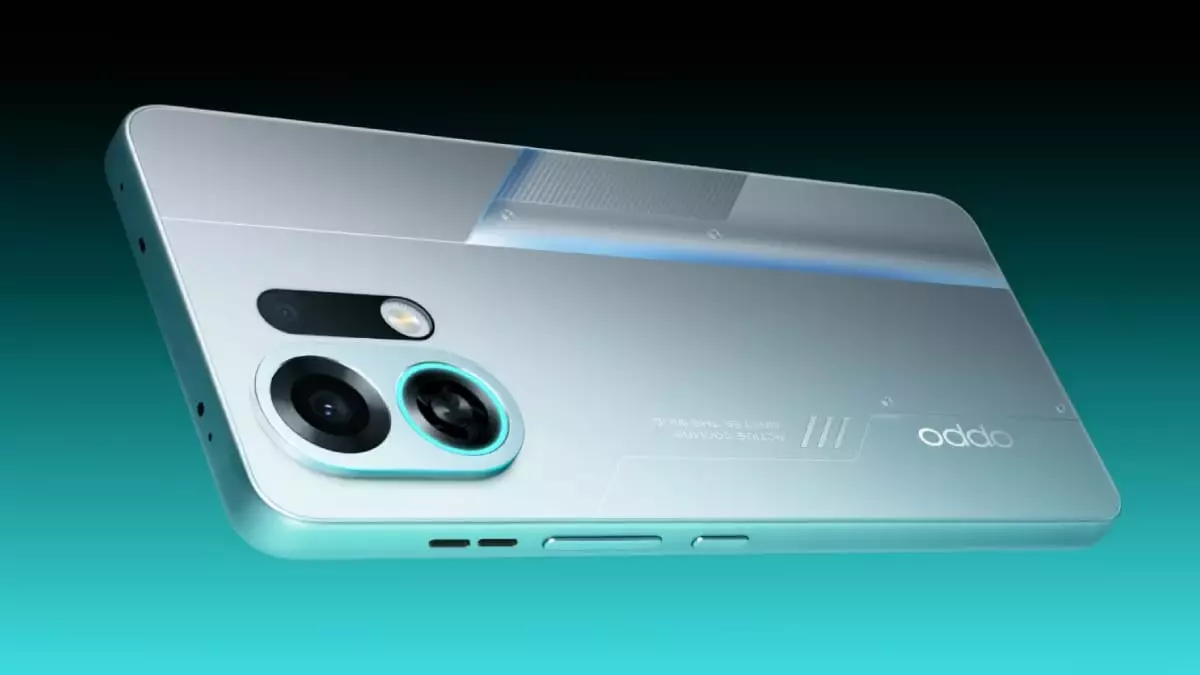In the rapidly evolving landscape of mobile technology, brands often fall into the trap of exaggerated claims and overhyped features. Oppo’s upcoming K13 Turbo series might seem to promise a groundbreaking leap in performance and innovation, but a critical look reveals a more nuanced reality. They highlight impressive technology like active cooling fans, AI enhancements, and cutting-edge processors—all under a sub-Rs. 40,000 price tag. While this marketing spiel is enticing on the surface, it raises questions about whether these features truly translate to a meaningful user experience or if they are merely designed to entice buyers with flashy specs.
The claim of integrating centrifugal fans into smartphones, coupled with vapour chambers and graphite layers, presents a novel approach to thermal management. However, one must consider if such thermal solutions are sustainable in the long-term, especially given the compact nature of modern devices. Is it practical to embed active cooling mechanisms into a smartphone, or does it risk overcomplicating a device that should prioritize simplicity and durability? There’s also skepticism about whether users will experience noticeable differences in everyday usage or if these cooling measures are simply marketing accessories to differentiate Oppo from competitors.
The Technical Jigsaw: High Performance vs. Real-World Utility
Oppo’s emphasis on the Snapdragon 8s Gen 4 processor and the MediaTek Dimensity 8450 chipset suggests an ambition to position these phones as powerful mid-range contenders. Nonetheless, the real question is whether consumers truly benefit from such incremental hardware upgrades. Power benchmarks like CPU and GPU improvements, while impressive numerically, often fail to correspond with tangible enhancements in gaming, multitasking, or daily activities.
Moreover, the AI features touted—such as text summarization, smart suggestions, and scene optimisation—are becoming increasingly common in mid-tier phones. Yet, the effectiveness of these features varies widely. How many users genuinely find real-world value in AI-powered suggestions or voice recognition that seamlessly adapt to their needs, especially in a market that is increasingly concerned with privacy and data security? Without rigorous applications and transparent privacy policies, these AI features risk becoming superficial gimmicks rather than transformative capabilities.
The inclusion of cutting-edge connectivity like Wi-Fi 7 and Bluetooth 6.0 can be viewed with skepticism. While future-proofing is a compelling narrative, the reality is that the existence of such features in mid-range devices may not significantly impact the average user, who rarely needs the latest standards unless they are professional or tech-savvy users.
Marketing Hype Versus Practical Value
Oppo is clearly aiming to position the K13 Turbo series as a flagship-like experience within the mid-range segment. However, this branding raises questions about what consumers truly value: raw numbers or meaningful usability? Promising a “31% CPU performance increase” and “49% GPU boost” sounds impressive, but the true test lies in software optimization, battery life, and longevity. Flashy numbers often mask underlying issues like thermal throttling under prolonged heavy use or compromised battery health over time—issues that aggressive cooling systems may not fully mitigate.
Furthermore, pricing remains speculative, but the expectation that these phones will stay within an accessible price point suggests a delicate balancing act. If Oppo aims for the premium features to justify higher prices, they risk alienating budget-conscious consumers who expect reliability and clarity rather than buzzwords and technical jargon. Conversely, introducing high-end components at a lower price might compromise quality either in build or software stability.
Finally, marketing efforts by Oppo tend to focus heavily on technological advancements rather than user experience. While AI-backed features and cooling technologies sound impressive, the critical user concern remains: how do these innovations solve real problems? Too often, smartphone manufacturers overpromise improvements that barely translate into everyday convenience, leaving consumers frustrated with feature bloat or inflated expectations.
In the end, the Oppo K13 Turbo series embodies the ongoing struggle within the smartphone industry—striving for innovation while navigating the pitfalls of marketing hype and consumer skepticism. Whether users will find genuine value or be swayed by the allure of cutting-edge features remains to be seen, but a healthy dose of skepticism is certainly warranted.


Leave a Reply